
15 minute read
Site assessement for busy people
from Upstate Gardeners' Journal March-April 2021
by JFM Publishing—(585) magazine / (585) Kids / Upstate Gardeners' Journal
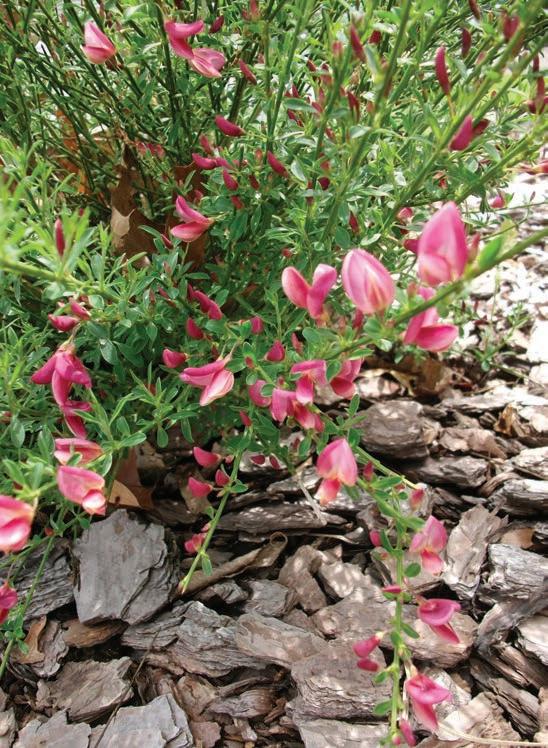
Site assessment for busy people
Advertisement
Story and photos by Michelle Sutton
LEFT: Wispy pale purple coneflower (Echinacea pallida), the favorite snack of the author’s resident woodchuck, had to be rescued by a friend
RIGHT: A Scotch broom (Cytisus scoparius) cultivar proved insufficiently hardy for the author’s garden but did give a number of years’ enjoyment before a particularly cold cold snap did it in
INSET: The sole surviving box-store wildflower, a lovely, forgiving toad trillium (Trillium sessile) One of my most important mentors, Dr. Nina Bassuk, taught a fabulous urban forestry course that I got to take while in graduate school. Bassuk gave us the opportunity to try out the most professional site assessment tools, protocols, and applications. For instance, to measure soil compaction, we got to use a device called a soil penetrometer that tests the resistance of the soil to pressure, giving you a result in PSI (pounds per square inch).
Bassuk showed us to how to take soil core samples, dry them out in the lab, and then calculate the bulk density of the soil, which is the weight of soil in a given volume. (Bulk density is another indication of compaction and therefore how rootfriendly or unfriendly a soil environment is.) She taught us how to systematically take soil samples across a given site and then how to interpret the lab’s findings as to pH, soil texture, and soil nutritional makeup. In her course, we looked at and quantified every possible facet of site assessment. That level of testing and documentation is especially important for large-scale projects, like the one that Bassuk and her colleagues Barb Neal, Bryan Denig, and Yoshiki Harada did, at nothing less than … the National Mall. The team was commissioned to analyze the site and the ailing American elm (Ulmus americana) trees and come up with recommendations. You can bet that for something this high profile, they were busting out the penetrometer and all the other gadgetry. Their site findings and their ultimate recommendations are extensively documented


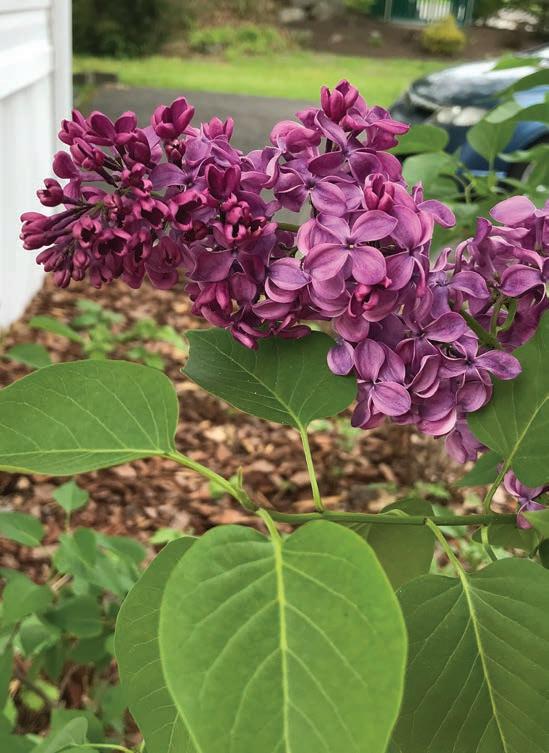
in two publications (see Resources). They are fascinating reading—I highly recommend—and spoiler alert: The National Mall has an insupportable American elm monoculture that will continue to be in massive decline.
To meet this crisis, Bassuk and colleagues came up with a twenty-year, phased plan for systematically diversifying the trees of this iconic landscape. As the failing National Mall elms are removed and a diversity of new tree species is planted, the plan provides for a similar visual coherence that the elms have had, but with the benefit of biological diversity, making the outcome much more sustainable than the elms have proved to be. — • —
Having worked as an educator in urban forestry for nearly twenty-five years, I’ve found that in everyday practice, the site assessment that urban foresters and tree planting groups do is not always as thorough as the one done for the National Mall project. It’s understandable. Spring or fall planting season comes with a rush; there are sites that need to be filled and trees that need to be planted in a hurry—especially if they’re bare root—and sometimes, because of numerous pressures, not every site assessment box gets checked.
However, when it comes to matching trees to sites in cities or deciding what to plant in your yard, perfection is not required; in fact, as with all things, perfection can be the enemy of the good. A lot of times, simple observations go a long way, no gadgets required. All this applies to our assessment of our own landscapes, as we work toward creating the gardens we desire that provide the beauty and ecosystem services we hope for. — • —
I sure as heck didn’t perfect the art of casual or rapid site assessment right away. In fact, I had a lot of failures in my current home gardens when I put them in ten to eleven years ago. I was enamored of plants I had used for clients for many years in Rochester or intrigued by certain plants I saw for the first time here in the nurseries of the Hudson Valley. I didn’t do the most thorough site assessment. I wanted to try stuff, and that’s ok too. I learned from the failures. I present to you a quick tour of some of them.
• In my boney, sandy, overly well-drained fill soil, I planted a rush (Juncus effusus) that needs clay soil and wet conditions, and I put it in near the hot asphalt driveway. I am amazed that it is still alive and has even managed to clump out microscopically over the last eleven years.
• I bought nursery-grown—one hopes that label was truthful—wildflower tubers and other propagules from the big box store down the road for the likes of trillium, wild ginger, and trout lily. I put them on the north side of the house (good), in sandy soil (not so good), and far from the property’s sole outdoor faucet (doom).
TOP LEFT TO RIGHT: Rochester lilac; Marshall lilac: These two lilacs, gifts from Ted Collins, are in overly well-drained soil, and, as such, they “Keep Small and Carry On”
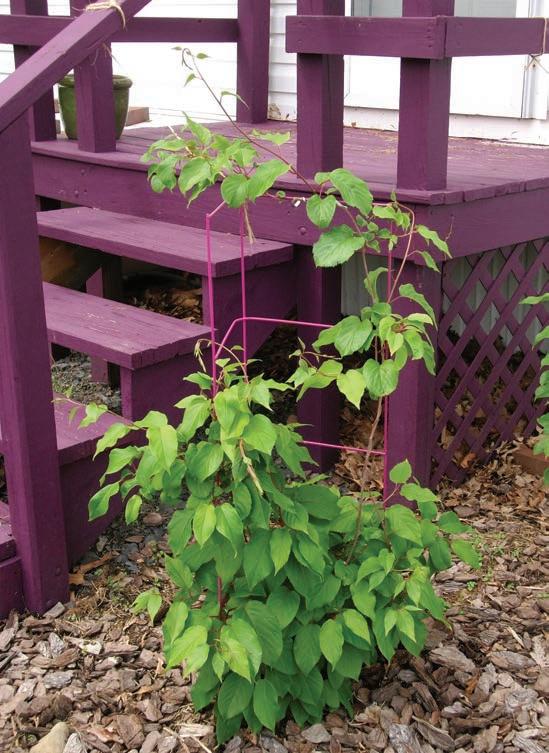
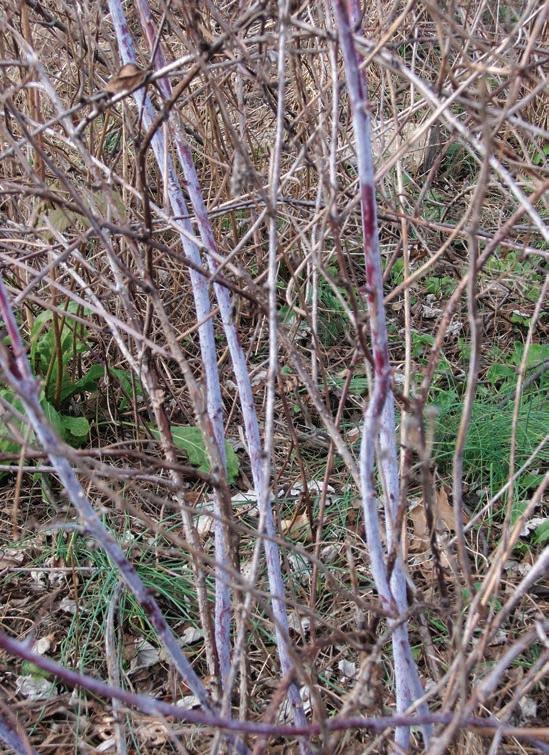
LEFT: The author planted two hardy kiwi (Actinidia arguta), a male and a female, in order to have fruit, but the two plants quickly engulfed the front porch, speaking to the importance of assessing available above-ground space before planting
RIGHT: Naturally occurring brambles grow in tough conditions and provide winter beauty and cover for the cutest of wildlife—the birds and the bunnies • I put in a weeping redbud too darn close to the house.
Why did I do that? It had to be moved. • The currants I planted (one red, one champagne), which prefer soil with the opposite characteristics of mine, produce a good crop if I water like crazy. The chipmunks get to eat most of the fruit before I do, but they are so stinking cute when they scale those vertical branches and stuff their cheeks. I just can’t dwell on how much water it takes to produce every currant. • I planted a lovely wispy form of coneflower from the native plant nursery, and the woodchuck ate it repeatedly, until I dug it up and gave it away, so it would have a chance at life.
• When I interviewed him for a story in this very publication, the late, great Ted Collins gifted me with two lilacs—one, a ‘Rochester’ lilac (Syringa vulgaris) that is used as a parent in many crosses, and the other, a
‘Mrs. W.E. Marshall’ lilac that has the purple flowers
I covet. These poor babies are growing in gravelly fill and are coping by remaining small and not blooming much. (Here you might be wondering why I didn’t amend my soil with massive amounts of organic matter back in 2010. We didn’t think we’d live here more than a year or two. Over the years, I’ve top-dressed with compost I make, but it’s never enough to meaningfully change the essentially challenging nature of the soil here. To do that would be a wholesale removeand-replace proposition, which would be wildly expensive … and makes me tired just writing this.) — • —
The professional approach to site assessment is best seen in the Site Assessment Checklist and Instructions I’ve listed in the Resources. Meantime, here’s a simpler version for folks in more of an “I-bought-this-and-now-I-have-tofind-a-place-for-it” situation.
First and always first: Call before you dig! 811. There’s no shortcut around this one. In addition to eliminating any potential safety hazards, you will get helpful information about where your yard’s underground utilities lay, so you can avoid planting a notoriously thirsty tree near the water line—and things of that nature. Seeing where the utilities run will help you determine how much belowground space is truly available for tree root growth. Aboveground space is simply: how big can this tree get, and is there adequate space here for that to happen gracefully?
USDA Hardiness Zone: This is super low-tech. Just see where you’re at on the commonly available map.
Microclimate Factors: Might there be heat radiating from nearby surfaces that will bump up the hardiness by half a zone or more? Or is the spot in a low-lying, colder pocket that drives the zone down? Is it super windy in that spot? That will put the tree at more risk of desiccation.
Sunlight Levels: Is there full sun (6 hours or more), partial sun/filtered light, or shade on the spot you have in
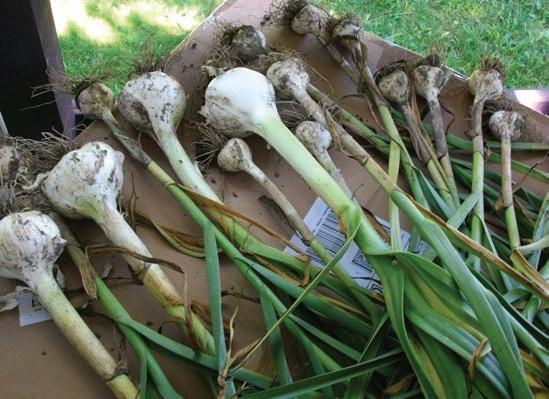

mind? Red switch grass (Panicum virgatum ‘Shenandoah’) has been so successful in my south-facing garden that I put a division of it in the backyard, which gets partial shade, to test out its versatility. Poor Shenandoah is just barely hanging in there; it wants back out in the sunny front yard.
Soil pH: You can take a bunch of samples from all over your yard and send them to the lab or use a quality professional level pH kit … or you can observe what’s already growing and where. On the property where I live, there’s a naturally occurring hedge of blackcaps (Rubus occidentalis) but the fruits don’t get very big, which could be explained by the dry, sandy, excessively well-drained and low-fertility soil they’re growing in. The presence of other intrepid pioneer plants like eastern cedar (Juniperus virginiana) and staghorn sumac (Rhus typhina) also speaks to the challenging site conditions, such that I could see early on that roses (other than rugosas), azaleas, and other ericaceous plants, and thirsty plant species in general were not going to be good matches here.
Soil Texture: Again, you can take a bunch of samples from all over your yard and send them into a lab that tests for texture or you can try soil texture assessments at home. What plants are growing well on the site? Are they plants known to be tolerant of clayey/poorly drained conditions, or are they ones that require good drainage? The naturally occurring mix of plants will collectively point you in the direction of your soil’s sandy, loamy, or clayey texture.
Compaction Levels: You could buy or borrow a penetrometer, and they are fun to use. Or you could use a shovel to find out how hard or easy the soil is to dig, a technique that has served me well over the years.
Drainage: You can test percolation by digging a hole and measuring how many inches drain per hour. Here again, existing plants can tell you a lot, as can your own observation about how long water pools (if it does at all) in a given spot. If water pools there in spring, but the same site gets really dry in the summer—not to worry, there are plants for that! (See resources on right)
RESOURCES
Cornell Urban Horticulture Institute (UHI) Team Evaluates Condition of National Mall Elms https://bit.ly/39RHjd1
UHI Produces Plan for a Sustainable National Mall Treescape https://bit.ly/3pTPivP
UHI Site Assessment Checklist and Instructions https://bit.ly/3tu8zGg
Woody Shrubs for Stormwater Management https://bit.ly/2MWjRSU

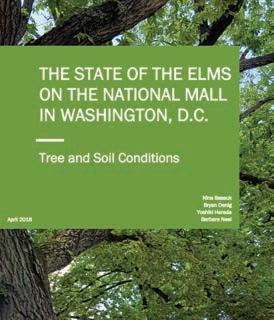
TOP FROM LEFT: Garlic has thrived in the author’s garden with some compost; a raspberry patch, starting with this one plant and preferring neglect, has thrived in poor soil and yielded many dozens of pounds of berries
RESOURCES: Highly recommended reading about site assessment on a big and hugely important scale, and management recommendations to create a sustainable National Mall landscape going forward
Sustainable gardens and landscapes
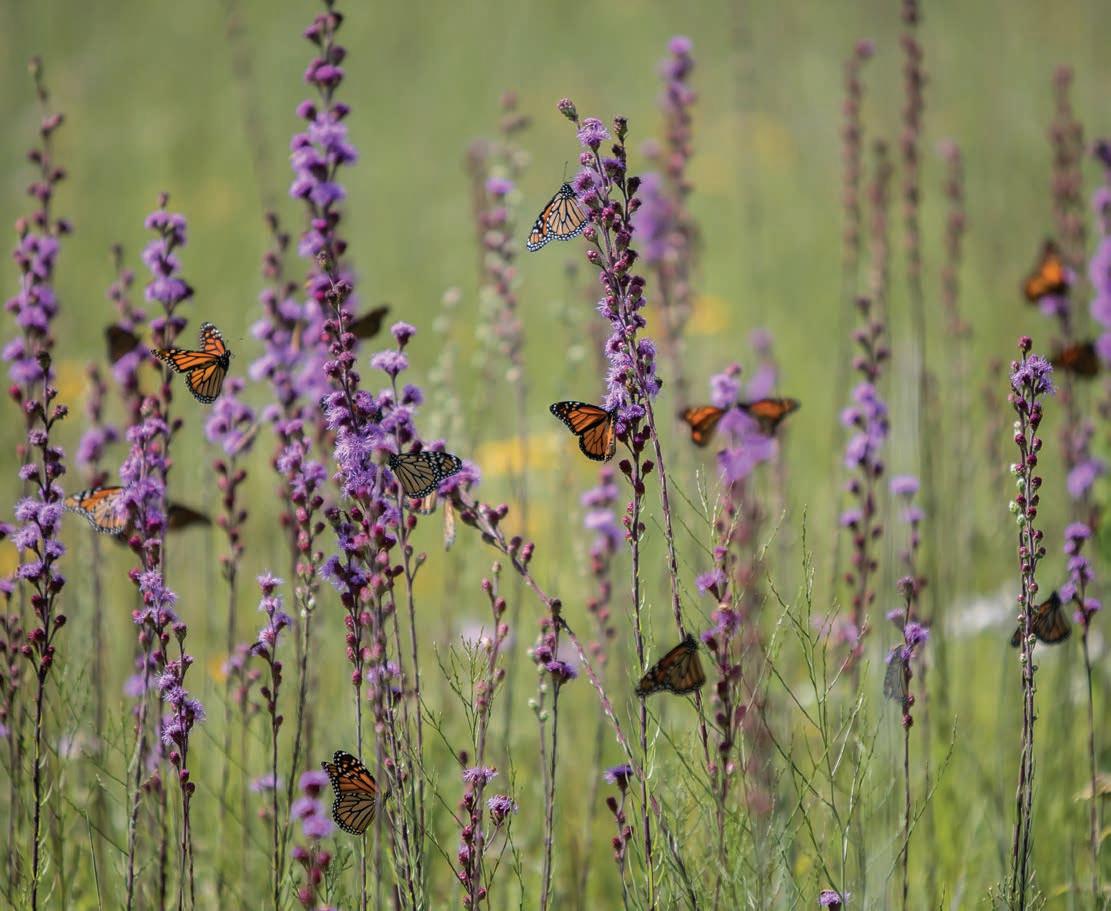
Story and photos by Filomena Cimino
The year 2020 was surely challenging—I doubt anyone would deny that—but it did give us an opportunity to reassess many things as we all began spending more time at home. As our houses became our safe havens, we found ourselves either consciously or unconsciously reassessing what “home” meant to each of us. Many caught up on projects like cleaning out and donating possessions we didn’t need and organizing spaces. Some of us grew gardens, both vegetable and decorative. Ah … necessity, that grand mother of invention, perhaps re-invention in this case.
My work as a landscape designer often has me literally grounded in the reality of today’s environmental challenges. Many of us appreciate and marvel at the sublime beauty of nature. We are finally beginning to realize that nature does not exist apart from us. What is required of us instead is that we recognize our integral role, how each one of us can turn the tide and in so doing create a living, sustainable planet for the future. I will elaborate on this a bit using native plants as an example.
The role that native species of plants play in the ecosystem is a strong one. With an alarming number of animal, bird, and plant species threatened with extinction (mostly since 1900), the argument for preservation is strong. For example, most of us are aware of the benefits of the humble bumblebee—without them, simply put, much of our food wouldn’t get pollinated. Two-thirds of the world’s crop species depend on natures creatures to transfer pollen between male and female flower parts. There are many pollinators including birds, butterflies, even bats, but no question—bees are the most important. Their wings beat 130 times per second, and this action, called buzz pollination, vibrates flowers until pollen is released. This behavior helps plants produce more fruit.
ABOVE: Monarch butterflies on liatris

ABOVE: This garden is a mix of native cultivars and exotics
RIGHT: Monarch caterpillars on butterfly weed
So, the next time you consider purchasing insecticide sprays, flea and tick treatments, or chemical products for your vegetable garden or your farm, please think again. Instead, take an active role in our collective well-being. The food chain is a real and dynamic system which we are completely dependent on for survival.
Back to plants. The argument to plant native species is significant, but it should also be recognized that an international mix of species will still engage in ecological processes that are like a naturally occurring community of plants. All species, both native and exotic, occupy specific ecological niches and interact with their environment and the plants around them. We need not completely exclude all plants that are not native. It is very important, however, to identify non-native trees, shrubs, wildflowers, and grasses that are considered invasive that should not be used in landscape plantings. These invasive exotic plants can displace native plant communities and the wildlife populations that they sustain. Their aggressive spread and growth enable them to out-compete native flora, enabling them to form large monocultures. The result is an obvious degradation of natural healthy biological systems. Native plants provide active dynamic landscapes with no loss of aesthetics—and with many more ecologically sound benefits than those that are merely decorative.
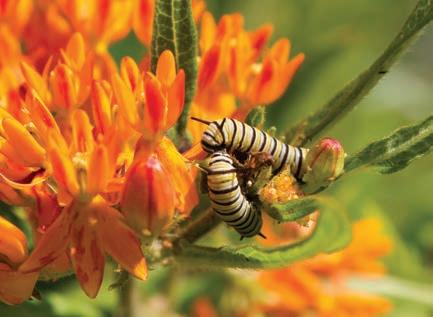
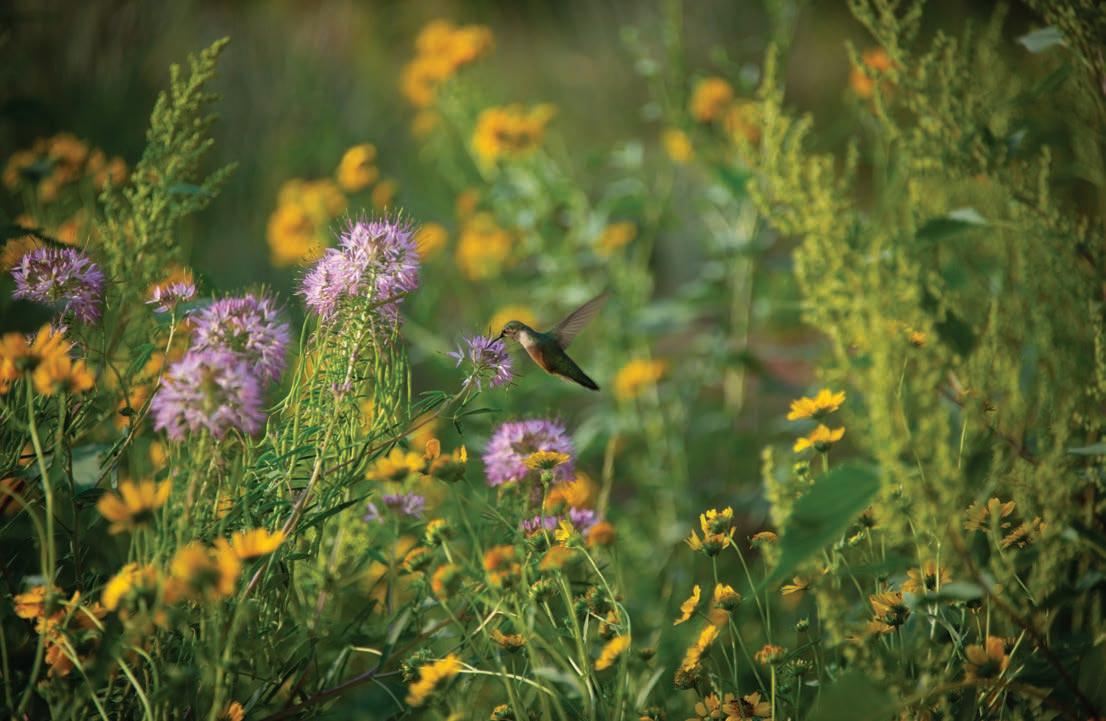
Specifically, let’s cite real benefits of native plants: • Easy to grow! These babies have adapted and evolved here for millennia. They have truly stood the test of time.
• Low maintenance. Everyone asks designers like me for “low maintenance” plants. The natives are the only true low maintenance plants. Why? Because they have adapted to our soils, climates, geology, and exist in harmony with our insect, bird, and mammal populations. Plus, because of these adaptations, they are less disease prone.
• Many flowering natives are favored by native bees and other pollinating insects. That’s a huge benefit to know that you are contributing to the food chain that sustains life on Earth.
• Particular species of forbs (flowering perennials) can be the sole nectar source for a specific butterfly or insect, for example: spotted beebalm (Monarda punctata) for the rare Karner blue butterfly. How special! • Certain species of forbs, like the cup plant (Silphium perfoliatum) provide several benefits for birds: food, water, and cover. Food for goldfinches (the seeds produced by the plant); water for songbirds and butterflies that will drink after rain from the “cup” that lies at the leaf-stem junction of the plant; and shelter, since the large leaves provide small birds with
cover from predators. These are the characteristics of a highly functional plant. • Deer resistance: Often natives are left untouched by deer. Again, they have an adaptive ecological niche in the landscape where deer have cohabitated.
• Monarch habitat: A monarch butterfly could live its life exclusively on milkweed (Asclepias spp.). We have three native species in central New York. Most monarchs live only three to five weeks. So, for the
Monarchs’ return journey to Mexico to occur, the process of the migration takes four generations! These butterflies are facing population decline, so please consider making your gardens Monarch-friendly by adding milkweeds, liatris, purple coneflower (Echinacea purpurea), New York ironweed (Vernonia noveboracensis) and others.
A close friend of mine who, since 1972, has dedicated his life to his native plant nursery in the Midwest, writes: “Planting natives encompasses far more than just doing a good deed for nature—our very existence depends upon it.”
Filomena Cimino of Skaneateles’s Turtle Island Landscapes is a Certified Nursery and Landscape Professional (CNLP) and a Master Gardener with twentyfive years of experience in working with native plants. Find her at turtleislandscapes.com. ABOVE: Hummingbird in a field of mixed plants





